The observatory has hosted a variety of lectures. You can view the video of a presentation by clicking on the speaker’s image. Please help us continue this series online by donating to the observatory. View the event calendar for upcoming lectures as well as other observatory activities.
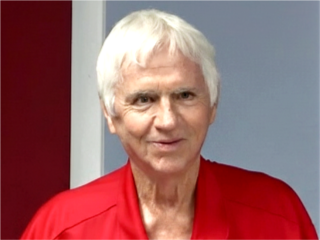
Mike Stafford – The Future of Space Flight. Mike Stafford recently returned to the Martz-Kohl Observatory to deliver another informative (and painless) presentation. He took the audience through a brief history of space flight, discussed current and proposed missions to our solar system utilizing technology of the coming decades, and then delved into speculative ways to achieve interstellar travel. True to his style, Stafford wove in accessible physics instruction, making complex principles understandable without relying on mathematical equations, ensuring the audience was “intellectually enriched.” Stafford, now retired, has previously taught at Penn State Behrend and served for 37 years as an adjunct instructor at Gannon University. Beyond his teaching, he’s also an accomplished aviator, a licensed parachute rigger, and an expert skydiver with over 3,700 jumps. © 2025

Ja:no’s Bowen – Grandmother Moon in Seneca Culture. Grandmother Moon, revered in Seneca culture, guides Earth’s inhabitants through seasons and influences natural rhythms. Her consistent presence in the night sky symbolizes the interconnectedness of all living things and the wisdom of generations past. Learn more about the myths and realities with Ja:no’s (Janine) Bowen, a member of the Beaver Clan of the Seneca Nation. Ja:no’s has taught Seneca language and culture to elementary and junior high school students on the Allegany Territory of the Seneca Nation from 2002 to 2007. In 2007, she became a Seneca language Instructor at Buffalo State College. In 2015, the Seneca Nation Chief of Staff appointed her Allegany Language Director. Ja:no’s holds an Ed.M. from Harvard University Graduate School of Education and an M.P.P. from Harvard University Kennedy School of Government. She currently pursues an Ed.D. in Educational Leadership. Ja:no’s aims to support indigenous students in overcoming unique challenges as they navigate the world. © 2025
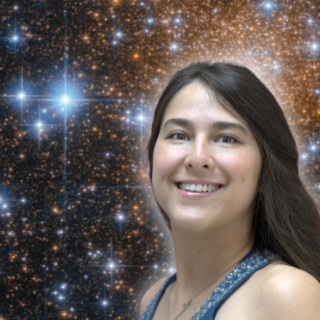
Dr. Alexandra Yep – The Study of Stars. Stars exist in an astonishing variety—massive blue giants, small lively reds, and pulsating yellows among them. But how do we know so much about these distant suns? Dr. Alexandra Yep, a poet turned astronomer, explores how astronomers have gone from simply observing points of light to understanding stellar phenomena like red giants and supernovae, and will share the tools they use to unlock these mysteries. Dr. Yep returns to the observatory to help with our summer STEM Space Camp and provide this talk. She earned her BFA in creative writing at Emerson College and then advanced to a Ph.D. in astronomy at Georgia State University and now teaches and researches young star clusters at Agnes Scott College, where she also serves as director of the Bradley Observatory. © 2025

Gary Nelson – The Language of Binoculars. Humanity has long been captivated by the distant, driven by an innate curiosity and practical needs like hunting, navigation, and defense, all pushing us to extend our sight. This desire to clarify the hardly seen led to significant innovations, with binoculars emerging as one of the most accessible tools to enable viewing of objects at a distance. These portable instruments, essentially two refracting telescopes, offer comfortable, three-dimensional viewing by delivering identical images to both eyes. Optical expert and former observatory president, Gary Nelson, leads the presentation and discussion, explaining key terms like magnification, objective size, exit pupil, field of view, and prism. Gary is exceptionally qualified for this, holding an optical engineering degree in Ophthalmic Dispensing and boasting over four decades of experience as a board-certified and licensed Ophthalmic Dispenser. His extensive background includes crafting optical lenses and telescope mirrors, as well as repairing various optical instruments like binoculars, gun scopes, and microscopes. © 2025

Corey Swanson – Seestar and Chill: Amateur Astronomy Made Easy. The wonders of the universe are now more accessible than ever, and in this talk, you’ll discover why. Martz-Kohl Observatory President Corey Swanson provided an insightful presentation on the ZWO Seestar series of smart telescopes. He illustrated how these groundbreaking, all-in-one devices are transforming both astronomy and astrophotography, empowering people of all skill levels, from total novices to experienced stargazers, to enjoy the cosmos. Corey covered how these powerful and affordable instruments function, guided viewers through their setup and use, and shared breathtaking images captured using them, truly highlighting their capabilities. He also addressed questions throughout the session. Corey is a lifelong astronomy enthusiast, actively engaging in both visual observation and astrophotography. His interests also extend to amateur radio where he holds an extra class license. Committed to community outreach, he established the Library Telescope Loan Program for local libraries. Professionally, he serves as a 911 Emergency Dispatcher for Chautauqua County and is a Councilman for the Town of Poland, residing in Kennedy, NY, with his wife and family. © 2025

Walt Pickut – Lost in Space: Space Exploration in Transition. The Martz-Kohl Observatory hosted a public forum on evolving funding and staffing changes at NASA, NOAA, and other federal science agencies. Committed to presenting all sides, Martz-Kohl invited the community to a respectful, fact-based discussion on whether the US would maintain space leadership, reshape its program for greater advances, or profoundly reevaluate its science programs. Board member Walt Pickut, who moderated, acknowledged the strong feelings surrounding these changes, stating the goal was to provide clarity for individuals to form their own fact-based opinions. Walt is a freelance writer and former editor at the Jamestown Gazette. He holds degrees in biology and communication, human physiology, and mass communication. Walt passionately advocates for science, inspiring citizens to appreciate nature’s wonders and understand its role in advancing humanity. © 2025

Torin McCoy – The Human Nature of Lunar Dust Risk. Understanding lunar dust risks to human exploration involves more than technical concerns. Torin McCoy’s presentation explores how risk communication and perception complicate managing these hazards. He provides insights into lunar dust challenges and shares how balance, credibility, and discernment are essential concepts for NASA’s work and our daily lives. Torin McCoy, a decades-long expert on hazard impacts on human health and performance, joined NASA in 2003. At Johnson Space Center, he became fascinated by lunar dust and its risks. His work highlights how individuals and organizations process risk information and the importance of balance, credibility, and trust in decision-making. © 2025

Margaret Verrico – Galaxies: From Spiral to Elliptical. The Universe is home to an incredible variety of galaxies—vast and awe-inspiring collections of stars, gas, dust, and dark matter. How did these diverse types of galaxies come to be? Margaret (Maggie) Verrico takes us on a journey through the evolution of galaxies, explaining how they formed in the early Universe and how they’ve transformed into the diverse population of galaxies we observe today. Maggie, a Ph.D. student at the University of Illinois Urbana-Champaign, studies galaxy evolution and supermassive black holes. She earned her Bachelor of Science in Physics from the University of Pittsburgh in 2021. She is interested in the how and why galaxies stop forming stars and transient events around black holes. © 2025

Erica Messmer – When Stars Attack – Nearby Supernovae and Earth. What happens when a massive star reaches the end of its life? It explodes in a brilliant burst known as a supernova, releasing vast amounts of energy and creating the heavy elements that make up the Earth—and even our bodies. Erica Messmer explores the fascinating world of supernovae and their cosmic aftermath. Erica’s journey to astronomy is anything but typical. After spending a decade as a chef, she returned to school to earn her B.S. in Physics from Northeastern Illinois University. She is now pursuing a Ph.D. in Astronomy at the University of Illinois. Outside of her academic work, Erica enjoys spending time with her cats and knitting. © 2025

Dr. Darren Williams – How Did the Moon Form? One current theory is that when the Earth was young – less than one-hundred millions old – a planet hit the Earth. If true, then the Moon might have formed out of the collision debris launched into orbit around the devastated Earth. Another theory is that the Moon was captured by the invisible hand of gravity without a collision. Is one of these correct? How are we to know? In this talk, Dr. Darren Williams describes what is known about the Moon and uses facts to debate the merits of old and new ideas for how and when it formed. Dr. Williams is a Professor of Astronomy and Astrophysics, and Planetary Science at Penn State Behrend in Erie Pennsylvania. In addition to teaching astronomy, he studies the climates, orbits, observable characteristics, and dynamical evolution of planets and satellites. © 2024
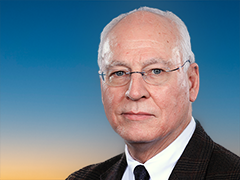
Dr. Jim Spann – Auroras and Eclipses: What’s the Big Deal? This year (2024), we were very fortunate to witness a couple of impressive natural events: a total solar eclipse in April and a spectacular auroral display in May. What do these events have in common and why should we care about them? This talk, by Dr. Jim Spann from NOAA, explores the connection between these two phenomena, why we should understand and study them, and how they impact society. Dr. James F. (Jim) Spann, Jr. is the Senior Scientist for Space Weather at NOAA’s NESDIS Office of Space Weather Observations (SWO). He is a renowned space weather scientist with extensive experience at both NASA and NOAA. With a strong background in physics and a career dedicated to studying space phenomena, he has made significant contributions to the field. © 2024

Dr. Alexandra Yep – The Study of Stars. Stars come in all shapes and sizes: Big powerful blue stars, small yet feisty red stars, strange pulsating yellow stars, and more. How do we know so much about stars? How did we go from seeing tiny points of light in the sky to knowing about red giants and supernovae? In this talk, intended for a general audience, Dr. Alexandra Yep helps us learn all about stars and the tools astronomers use to understand them. Alex Yep is a poet turned astronomer. She now works as a visiting professor at Agnes Scott College in Decatur, GA, where she teaches physics and astronomy, researches young star clusters, and directs the Bradley Observatory. © 2024
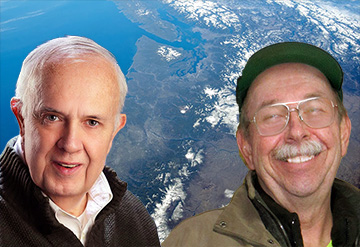
Walt Pickut & Tom Traub – The Onslaught of Extraterrestrial Objects. There has been a lot of activity in our solar system with solar flares and visits of Near Earth Objects (NEOs). Observatory board members, Walt Pickut and Tom Traub joined forces to talk about these recent events in the context of Earth being a “target.” Sunspot activity has produced flares and storms generating spectacular auroras as well as causing partial radio disruptions around the world. Tom Traub discusses the Sun, recent solar events and possible implications. NEOs such as comets, asteroids, and meteors are objects that have been nudged by the gravitational attraction of nearby planets into orbits that allow them to enter the Earth’s neighborhood. Walt talks about the different types of NEOs, where they come from, how they’ve impacted the Earth, and possible future dangers. © 2024

Mike Stafford – The Secret Life of the Sun: An Introduction to Solar Physics. The Sun is a marvel of physics. At its core, under immense pressure and scorching temperatures, hydrogen atoms undergo nuclear fusion releasing a tremendous amount of energy. This energy slowly makes its way outward, battling its way through layers of hot plasma, before radiating out into space as light and heat. The Sun’s influence extends far beyond its visible surface. Solar winds, a stream of charged particles, whip out from the Sun impacting Earth. Powerful corona mass ejections can disrupt satellites and power grids here on Earth. Semi-retired physics professor, Mike Stafford, returned to the Martz-Kohl Observatory to help us understand solar physics in a non-mathematical way while sharing the wonder that is our closest star. © 2024
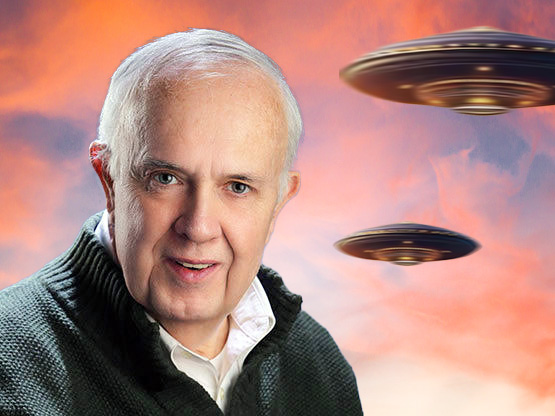
Walt Pickut – Are We Really Alone? The Search Has Only Begun! The search for extraterrestrial intelligence (SETI) is ongoing. The SETI Institute remains active in the field, using powerful telescopes and managing various projects. Unidentified Flying Objects (UFOs) are no more; we now have Unidentified Anomalous Phenomena (UAP). Walt Pickut discusses the latest Pentagon report on UAP, published in January 2024, as well as some take-aways from a public meeting held by NASA, last year. He also leads the audience in assigning values to the Drake Equation, a framework for considering the factors that might influence the possibility of extraterrestrial life. Walt Pickut is a scientific author and the author of the true-story, “The First Counterspy.” He is the perfect person to present recent factual findings, as well as a bit of speculation. Walt says, “the answer is still out there!” © 2024
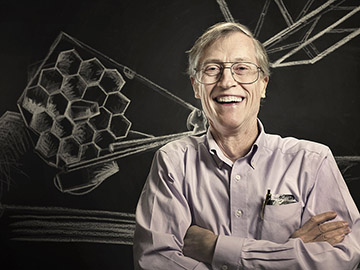
Dr. John Mather – Opening the Infrared Treasure Chest with the James Webb Space Telescope. Nobel Prize Winner in Physics, Dr. John C. Mather, shows how the James Webb Space Telescope (JWST) was built, what we have found, and what we hope to find. JWST was commissioned in July 2022. With its cameras and spectrometers, JWST is already producing magnificent images of galaxies, active galactic nuclei, star-forming regions, and planets. Scientists are hunting for some of the first objects that formed after the Big Bang, the first black holes (primordial or formed in galaxies), and beginning to observe the growth of galaxies, the formation of stars and planetary systems, and individual exoplanets. Dr. Mather is a Senior Astrophysicist and the Senior Project Scientist Emeritus for the JWST at NASA’s Goddard Space Flight Center. © 2024
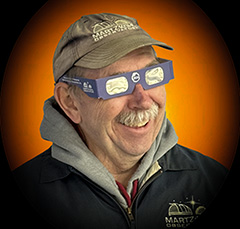
Tom Traub – Get Ready for the Total Solar Eclipse. NASA Eclipse Ambassador and experienced amateur astronomer, Tom Traub, returns to the observatory with an updated presentation that provides a historical view of solar eclipses and explains how and why eclipses happen and what you can expect to experience with the upcoming Total Solar Eclipse on April 8, 2024 in Western New York and Northwest Pennsylvania. Tom is Vice President of the Marshal Martz Memorial Astronomical Association, Inc. (MMMAA), the nonprofit organization that operates the Martz-Kohl Observatory. Tom is an avid eclipse “chaser” and says, “I saw my first Solar Eclipse on March 7, 1970. I have seen 4 Total, 1 Hybrid, 3 Annular and 5 Partial Solar Eclipses.” © 2024
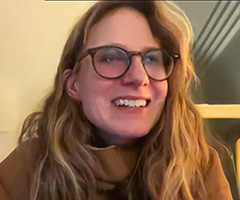
Kate LaRue – New York Times Magazine and the James Webb Telescope. Kate LaRue, digital art director for the New York Times Magazine, briefly walks through the history of the New York Times, explains how one ambitious article — Snowfall — changed the course of interactive storytelling- and Kate says her own career. She then does a case study of how one of the magazine’s latest features, “A Beginner’s Guide to Looking at the Universe” came to be. Along the way, Kate shows how the NY Times has historically spent considerable page space on astronomy and space exploration events. A few discoveries of the James Webb Telescope are presented, demonstrating that the more we learn, the more there is to learn. © 2024
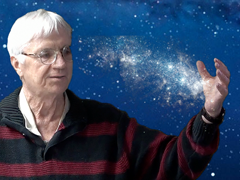
Mike Stafford – The Origin and Evolution of Galaxies. The universe is populated by a vast arrangement of large scale structures consisting of stars and gas and dust called galaxies. This talk considers what occurred “shortly” after the Big Bang, giving the theory of where these structures came from and how they have changed over time. Mike Stafford discusses the properties of galaxies and why they have those properties. Mike is a semi-retired physics instructor who taught at Penn State University full time and Gannon University as an adjunct for 37 years. His primary interest in physics is classical mechanics. Mike is also a licensed airplane pilot with single and multi-engine land certification. © 2023
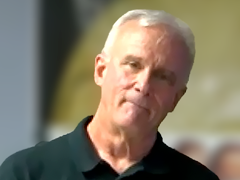
Steve Conard – Occultation Timing to Determine Asteroid Size & Shape. What is an occultation and how does it help to obtain information about an asteroid? A stellar occultation occurs when the light from a star is blocked by an intervening body (such as a planet, moon, or asteroid) from reaching an observer. Steve Conard describes how amateur astronomers use modest sized telescopes and relatively inexpensive cameras to collect occultation data, along with software tools to predict events and analyze the resulting data. Steve has been an amateur astronomer for more than 50 years. His love of telescope making as a teenager turned into a 40 year career working for the Johns Hopkins University developing optical systems as an optical engineer. © 2023
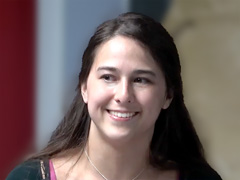
Dr. Alexandra Yep – Cosmic Collisions: Close Encounters in the Gum Nebula. When stars pass very close to each other, they potentially kick up comets from each other’s Oort clouds and cause heavy bombardment events. A stellar association is a very loose cluster of stars that share a common origin, but have become gravitationally unbound. A collision of stellar associations can serve as a laboratory of close stellar encounters. Dr. Alexandra Yep returns to the observatory to discuss the collision of two stellar associations in the Gum Nebula in the southern sky. A fun fact is that Dr. Yep is a poet turned astronomer – and we coaxed her to share some of her poetry. © 2023
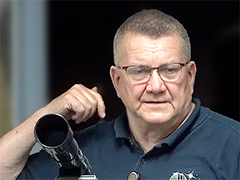
Gary Nelson – Binoculars and Telescopes: Types and Choices. What are some of the different types of binoculars and telescopes? What do all the numbers on binoculars and telescopes mean? What should you look for when buying? There are many considerations when buying something to learn about astronomy and view the night sky. Gary Nelson, licensed optician, former professional telescope dealer, and long-time president at the Martz-Kohl Observatory answers these questions and more in a hands-on presentation. Tom Traub follows the talk with a short discourse on the upcoming total solar eclipse of April 8, 2024. © 2023

Tom Traub – Get Ready for Upcoming Solar Eclipses. Did you know that a total solar eclipse will be visible in Western New York and Northwest Pennsylvania within the next year – April 8, 2024? Did you know that there are four different types of solar eclipses? Do you know how to safely view a solar eclipse? NASA Eclipse Ambassador and experienced amateur astronomer, Tom Traub provides a historical view of solar eclipses. He also explains how and why eclipses happen and what you can expect to experience. Tom is Vice President of the Marshal Martz Memorial Astronomical Association, Inc. (MMMAA), the nonprofit organization that operates the Martz-Kohl Observatory. © 2023
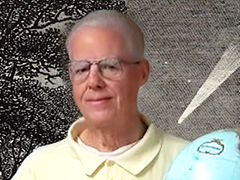
Phil Evans – Astronomy Surrounds Us. Astronomy surrounds us in books, magazines, movies, social media, and in various venues. This interesting and informative talk by long-time Martz-Kohl Observatory member, Phil Evans, was fun for all ages and levels of knowledge of astronomy. Phil walked and talked through time and history, stopping at key points along the way. Phil is a retired county government employee and veteran of the United States Army. He is a student of history and collects stamps, coins and historical related materials. As for astronomy, he enjoys reading about how astronomy has impacted earlier civilizations such as by the appearance of comets and unidentified flying objects. © 2023
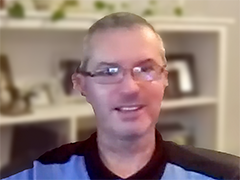
Tim Horvath – Science on Artemis Missions. Artemis, twin sister of the Greek god, Apollo, and goddess of the Moon, personifies our path to the Moon as the name of NASA’s efforts to return to the Moon and beyond. With Artemis missions, NASA will land the first woman on the Moon and use innovative technologies to explore more of the lunar surface than ever before. This presentation by Tim Horvath provides an overview of NASA’s Artemis missions, the spacecraft that will be used, how the missions will be conducted, and some of the Science that will be accomplished. Tim Horvath is the Deputy Manager of the NASA Gateway Program’s Mission Integration & Utilization Office, which is responsible for key Gateway disciplines including mission integration, integrated logistics, utilization/science, and payload operations. © 2023

Dr. James Spann – Small Satellites for Big Science. As access to space has become more available to the commercial market, a revolution of using small satellites has taken place. The use of small satellites to conduct research has been embraced by NASA and the National Science Foundation. The symbiotic role of small and large satellites for space exploration is explored using Heliophysics Missions and associated spacecraft as examples. Dr. James F. (Jim) Spann, Jr., is the Heliophysics Division Space Weather Lead at NASA Headquarters. During his 36-year NASA career, he developed, and flew in space, several auroral UV remote sensing instruments, managed the Marshall Space Flight Center’s science research organization, and served as the MSFC Chief Scientist. © 2023

Mike Stafford – The Earth in Motion, Mike examines and explains the various motions the earth undergoes as it travels through space, including its interactions with the sun, the moon and the other planets. Also examined is the motion of the Solar System through the galaxy, the galaxy through our local group, and on and on… Mike Stafford, now semi-retired, taught Physics at Penn State University full time and Gannon University as an adjunct for 37 years. Mike is a licensed airplane pilot with single and multi-engine land certification. He is also a licensed parachute rigger and expert skydiver with 3700 jumps! © 2022

David Wilkins – A Practical Introduction to Astrophotography. Dave presents the how-to basics of nightscape and wide field astrophotography. He discusses the how (the use of correct camera settings), where (dark location options), when (best times of the year) and what objects can be imaged with gear you might already have. Dave is a member of the Martz-Kohl Observatory from Warren, PA. He started his journey of mastering astrophotography about six years ago, though he has over twenty years of other photography experience ranging from drone videos through landscapes and portraits. © 2022
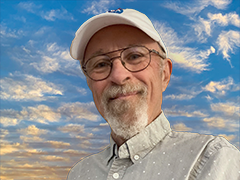
James Keough – The Challenger Learning Center Experience. In the aftermath of the Challenger accident, the crew’s families came together, firmly committed to the belief that they must carry on the spirit of their loved ones by continuing the Challenger crew’s educational mission. Their efforts resulted in the creation of Challenger Center for Space Science Education. James Keough presents information-about and programs-offered at the Challenger Learning Center of the Twin Tier Region in Allegany, NY. James graduated from SUNY Geneseo with a BS in Education. He later became certified in K-12 Vocal Music and taught in that capacity at Scio (NY) Central School for 24 years before teaching 4th grade for seven years. © 2022
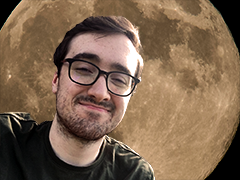
Ray Garner III – The Man on the Moon. Over fifty years ago, America became the first (and so far, only) nation to put a man on the Moon. That momentous event is one for the ages and was watched by millions of people worldwide. What is less remembered are all the smaller steps required to get to the Moon. This talk by Ray Garner III, a NASA/JPL Solar System Ambassador, takes you through that dramatic journey. Born in Las Vegas, Nevada and raised in Georgia, Ray Garner has spent his whole life wondering about the Universe. After getting his B.S. in Physics from Furman University, Ray went directly on to graduate school at Case Western Reserve University, where he is currently pursuing his PhD. © 2022